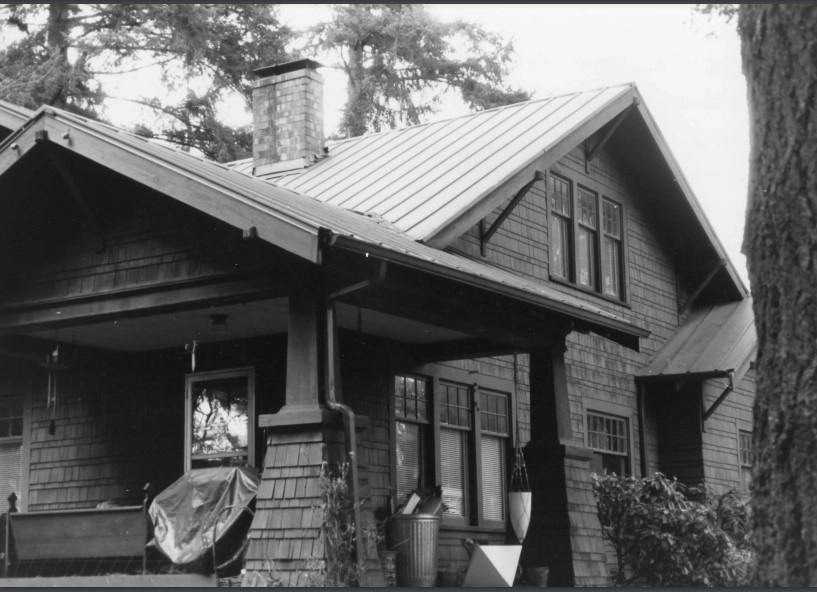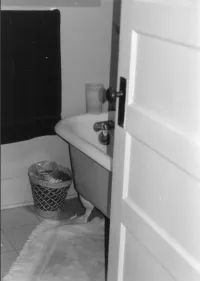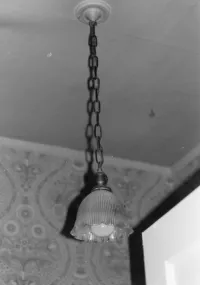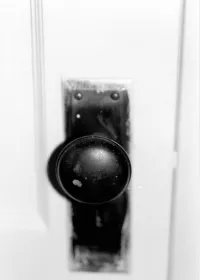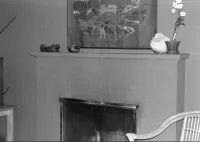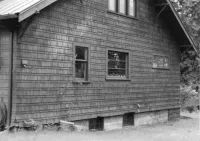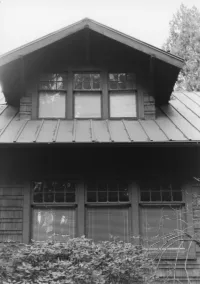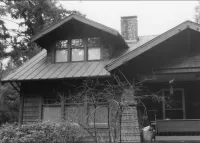Share what you know,
and discover more.
Share what you know,
and discover more.
Mar 09, 1995

-

- Charmaine Bantugan
National Register of Historic Places - Lilly Kirk House (Kirk-Matson House;Lolly Kirk House;30/31-402E)
Statement of Significant: The Historic Resources of Bothell, Washington, Multiple Resources Property Documentation Form states that in the early twentieth century, as logging declined in importance, Bothell's agricultural economy grew rapidly. Bothell increasingly functioned as a service center for the surrounding farmlands and did so until after World War II. Numerous stores and a movie theater appeared along the downtown streets. Bothell's population growth, its role as a farm service center, and its position along the Pacific Highway led to a small building boom in the early twentieth century and increasingly these new houses were built in the Craftsman and bungalow modes. Craftsman style housing seemed appropriate in Bothell, a community located in an intermediate zone between the large Seattle-Everett urban area and the rich agricultural hinterlands. Its popularity is not surprising since it was designed originally to serve the growing mass of middle-class small- business owners, professional services providers, and skilled or semi-skilled workers which were beginning to dominate in Bothell. The style was affordable by these emerging entrepreneurs and the use of widely available standardized plans and building components allowed the local builder, who may or may not have had less skill, to respond to the desire for independent home ownership. The Kirk house is particularly representative of this intent as it was built for a prosperous middle- class store owner by a skilled "one-man business" building contractor in a rather more expansive size and style than the typical farm houses of the times, but which was rooted in solid middle-class values and the strict Craftsman style of attractive serviceability and utility. The color and materials of the Kirk House are particularly harmonious with its setting in keeping with Gustav Stickley's tenet of "harmony with the natural surroundings". As one leaves 100th Avenue to enter the Kirk property, through a heavy mix of coniferous and deciduous trees and undergrowth out of which is carved the building site and its orchard plantings, one travels back to the 1920s and '30s of Bothell's past. Based on Bothell's current survey information, the Kirk House is the most representative of Stickley's philosophy of architecture in harmony with nature and the truest example in Bothell to the Arts and Crafts movement. One of the new stores mentioned above, located on the Seattle-Bothell Highway, was that of Mr. Lawrence M. Kirk and his wife Lilly. (She also may have been known as "Lolly", but this is unconfirmed.) Mr. Kirk built his five-acre parcel with his orchard and Craftsman bungalow, to reflect the rural ideals missing from his previous assignments in the much more urban Seattle. Kirk had been a salesman for Grossman Brothers Produce Company in Seattle for several years and had owned his own grocery in Seattle as well. The couple had purchased land in the residential area north of downtown in Bothell in 1914 from Mrs. Clara Ellis Gardner, widow of a prominent Bothell citizen, Dr. Penbroke Seward Gardner. Their new home was constructed in 1923 by Mrs. Kirk's brother, W.C. "Bill" Mortenson, who was a builder and contractor with a business in Seattle. He later moved his business to Bothell and became a respected member of the local Oddfellows fraternal organization. Mrs. Kirk's sister, Seloma, also lived in Bothell as the wife of her second husband, Mr. D. L. Goldbach. Mr. Goldbach was instrumental in organizing the local Co-operative Mercantile Company and was active in civic affairs, including acting as a Police Judge in 1911. While there is other well-maintained homes of similar style and age in Bothell, few if any have retained their historic integrity in such detail and none are as well located in its original setting which so typifies the Stickley ideal as the Kirk House. The present owner, Mrs. M.S. Matson, and her now deceased husband, bought the home from Mrs. Kirk in 1941. Mrs. Matson and other members of her family live there today. Neither the Kirks who had the home built, nor the Matsons who bought it, made any significant alterations to the structures.
National Register of Historic Places - Lilly Kirk House (Kirk-Matson House;Lolly Kirk House;30/31-402E)
Statement of Significant: The Historic Resources of Bothell, Washington, Multiple Resources Property Documentation Form states that in the early twentieth century, as logging declined in importance, Bothell's agricultural economy grew rapidly. Bothell increasingly functioned as a service center for the surrounding farmlands and did so until after World War II. Numerous stores and a movie theater appeared along the downtown streets. Bothell's population growth, its role as a farm service center, and its position along the Pacific Highway led to a small building boom in the early twentieth century and increasingly these new houses were built in the Craftsman and bungalow modes. Craftsman style housing seemed appropriate in Bothell, a community located in an intermediate zone between the large Seattle-Everett urban area and the rich agricultural hinterlands. Its popularity is not surprising since it was designed originally to serve the growing mass of middle-class small- business owners, professional services providers, and skilled or semi-skilled workers which were beginning to dominate in Bothell. The style was affordable by these emerging entrepreneurs and the use of widely available standardized plans and building components allowed the local builder, who may or may not have had less skill, to respond to the desire for independent home ownership. The Kirk house is particularly representative of this intent as it was built for a prosperous middle- class store owner by a skilled "one-man business" building contractor in a rather more expansive size and style than the typical farm houses of the times, but which was rooted in solid middle-class values and the strict Craftsman style of attractive serviceability and utility. The color and materials of the Kirk House are particularly harmonious with its setting in keeping with Gustav Stickley's tenet of "harmony with the natural surroundings". As one leaves 100th Avenue to enter the Kirk property, through a heavy mix of coniferous and deciduous trees and undergrowth out of which is carved the building site and its orchard plantings, one travels back to the 1920s and '30s of Bothell's past. Based on Bothell's current survey information, the Kirk House is the most representative of Stickley's philosophy of architecture in harmony with nature and the truest example in Bothell to the Arts and Crafts movement. One of the new stores mentioned above, located on the Seattle-Bothell Highway, was that of Mr. Lawrence M. Kirk and his wife Lilly. (She also may have been known as "Lolly", but this is unconfirmed.) Mr. Kirk built his five-acre parcel with his orchard and Craftsman bungalow, to reflect the rural ideals missing from his previous assignments in the much more urban Seattle. Kirk had been a salesman for Grossman Brothers Produce Company in Seattle for several years and had owned his own grocery in Seattle as well. The couple had purchased land in the residential area north of downtown in Bothell in 1914 from Mrs. Clara Ellis Gardner, widow of a prominent Bothell citizen, Dr. Penbroke Seward Gardner. Their new home was constructed in 1923 by Mrs. Kirk's brother, W.C. "Bill" Mortenson, who was a builder and contractor with a business in Seattle. He later moved his business to Bothell and became a respected member of the local Oddfellows fraternal organization. Mrs. Kirk's sister, Seloma, also lived in Bothell as the wife of her second husband, Mr. D. L. Goldbach. Mr. Goldbach was instrumental in organizing the local Co-operative Mercantile Company and was active in civic affairs, including acting as a Police Judge in 1911. While there is other well-maintained homes of similar style and age in Bothell, few if any have retained their historic integrity in such detail and none are as well located in its original setting which so typifies the Stickley ideal as the Kirk House. The present owner, Mrs. M.S. Matson, and her now deceased husband, bought the home from Mrs. Kirk in 1941. Mrs. Matson and other members of her family live there today. Neither the Kirks who had the home built, nor the Matsons who bought it, made any significant alterations to the structures.
Mar 09, 1995
National Register of Historic Places - Lilly Kirk House (Kirk-Matson House;Lolly Kirk House;30/31-402E)
Statement of Significant:The Historic Resources of Bothell, Washington, Multiple Resources Property Documentation Form states that in the early twentieth century, as logging declined in importance, Bothell's agricultural economy grew rapidly. Bothell increasingly functioned as a service center for the surrounding farmlands and did so until after World War II. Numerous stores and a movie theater appeared along the downtown streets. Bothell's population growth, its role as a farm service center, and its position along the Pacific Highway led to a small building boom in the early twentieth century and increasingly these new houses were built in the Craftsman and bungalow modes.
Craftsman style housing seemed appropriate in Bothell, a community located in an intermediate zone between the large Seattle-Everett urban area and the rich agricultural hinterlands. Its popularity is not surprising since it was designed originally to serve the growing mass of middle-class small- business owners, professional services providers, and skilled or semi-skilled workers which were beginning to dominate in Bothell. The style was affordable by these emerging entrepreneurs and the use of widely available standardized plans and building components allowed the local builder, who may or may not have had less skill, to respond to the desire for independent home ownership.
The Kirk house is particularly representative of this intent as it was built for a prosperous middle- class store owner by a skilled "one-man business" building contractor in a rather more expansive size and style than the typical farm houses of the times, but which was rooted in solid middle-class values and the strict Craftsman style of attractive serviceability and utility. The color and materials of the Kirk House are particularly harmonious with its setting in keeping with Gustav Stickley's tenet of "harmony with the natural surroundings". As one leaves 100th Avenue to enter the Kirk property, through a heavy mix of coniferous and deciduous trees and undergrowth out of which is carved the building site and its orchard plantings, one travels back to the 1920s and '30s of Bothell's past. Based on Bothell's current survey information, the Kirk House is the most representative of Stickley's philosophy of architecture in harmony with nature and the truest example in Bothell to the Arts and Crafts movement.
One of the new stores mentioned above, located on the Seattle-Bothell Highway, was that of Mr. Lawrence M. Kirk and his wife Lilly. (She also may have been known as "Lolly", but this is unconfirmed.) Mr. Kirk built his five-acre parcel with his orchard and Craftsman bungalow, to reflect the rural ideals missing from his previous assignments in the much more urban Seattle. Kirk had been a salesman for Grossman Brothers Produce Company in Seattle for several years and had owned his own grocery in Seattle as well. The couple had purchased land in the residential area north of downtown in Bothell in 1914 from Mrs. Clara Ellis Gardner, widow of a prominent Bothell citizen, Dr. Penbroke Seward Gardner. Their new home was constructed in 1923 by Mrs. Kirk's brother, W.C. "Bill" Mortenson, who was a builder and contractor with a business in Seattle. He later moved his business to Bothell and became a respected member of the local Oddfellows fraternal organization. Mrs. Kirk's sister, Seloma, also lived in Bothell as the wife of her second husband, Mr. D. L. Goldbach. Mr. Goldbach was instrumental in organizing the local Co-operative Mercantile Company and was active in civic affairs, including acting as a Police Judge in 1911.
While there is other well-maintained homes of similar style and age in Bothell, few if any have retained their historic integrity in such detail and none are as well located in its original setting which so typifies the Stickley ideal as the Kirk House.
The present owner, Mrs. M.S. Matson, and her now deceased husband, bought the home from Mrs. Kirk in 1941. Mrs. Matson and other members of her family live there today. Neither the Kirks who had the home built, nor the Matsons who bought it, made any significant alterations to the structures.
Posted Date
Jul 17, 2023
Historical Record Date
Mar 09, 1995
Source Name
National Register of Historic Places
Source Website
Delete Story
Are you sure you want to delete this story?
